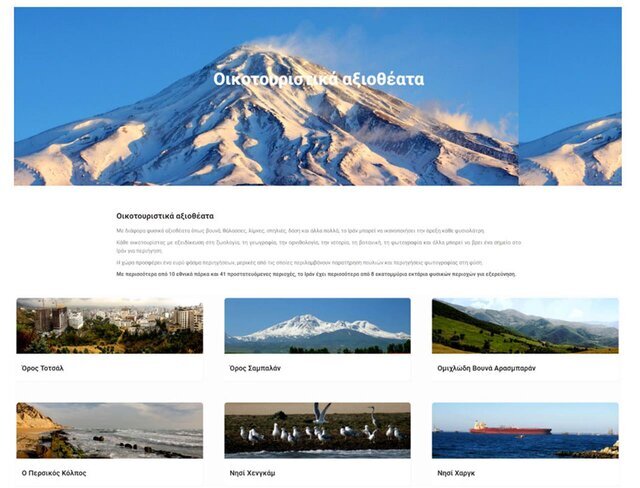Iran’s natural beauty goes Greek

TEHRAN – To promote Ecotourism on one hand and introduce Iran’s natural wonders on the other hand, the “Nature Tourism” section has been launched on the Iranology website in the Greek language.
In light of the tourism industry’s growth and notable desire for environmentally-friendly travel experiences all over the world, launching multi-language websites could be considered a significant step to promote Tourism at an international level.
According to the related officials, the Nature Tourism section can serve as a useful reference for Greek tourists who are seeking to explore Iran's natural attractions.
The newly launched section provides comprehensive information on over 110 natural attractions of Iran, featuring the introduction of natural attractions such as name, location, images, descriptions, and information about available facilities and services.
Furthermore, some travel tips are included on the website such as access, the best time to visit, necessary equipment, and introduction to local communities comprising information about culture, customs, and local handicrafts.
A wide range of Iran's natural attractions, including Dolphin Bay, Salt Lake, Gohar Lake, Cloud Forest, Alamut Valley, Mount Damavand, Ali Sadr Cave, Bagh-e-Jahan Nama, and Urmia Lake, to name a few are introduced to Greek tourists through the Nature Tourism website.
It is also worth mentioning that the launch of this section of the Iranology website was communicated via email to over 3,000 recipients of the cultural liaison and sent to 20 tourism institutions for inclusion in their touristic programs.
The International Ecotourism Society defines this type of tourism as "responsible travel that helps conserve the environment and improve the well-being of local people."
The goal of ecotourism is to minimize the impact of tourism on nature and promote sustainable development and environmental conservation during travel. This type of tourism provides an opportunity to familiarize oneself with the cultures and customs of local communities, support the local economy, and preserve biodiversity and natural resources.
Iran, with its diverse climate and geography, boasts unique natural attractions that can be an attractive destination for ecotourists. These include mountains, forests, deserts, lakes, wetlands, caves, and national parks.
